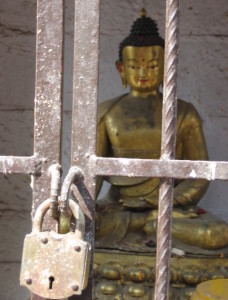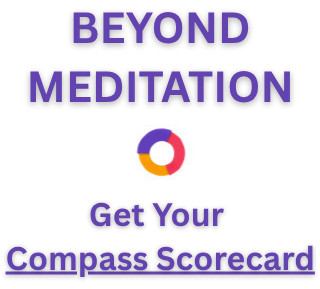 By most standards, I’m a fairly experienced meditator. I meditate daily, and have for years. I’ve spent months at a time immersed in silent practice. I study it, teach it, and write about it.
By most standards, I’m a fairly experienced meditator. I meditate daily, and have for years. I’ve spent months at a time immersed in silent practice. I study it, teach it, and write about it.
I can still wonder if I’m doing it wrong.
Meditation is deeply personal. Except with the broadest brushstrokes, this intricate journey into one’s most intimate inner experience can not be translated or taught. Teachers may of course share their intuition and expertise, but it is not possible to get inside another person and co-pilot the constantly changing labyrinth of mind and heart that makes up our moment-by-moment awareness. Nobody else can steer for us a micro-course through the unending deluge of mental and physical stimuli that besets us all. The absolute inwardness of the practice leaves each practitioner to navigate the specifics on his or her own.
Nor is meditation a one-size-fits-all undertaking. Buddhism alone offers many approaches. Even within the narrower domain of vipassana – the practice that has been my framework for almost two decades – there are dozens of ways. Many road maps detail the general terrain, but a map is never the actual territory. We are each by necessity our own scout, sherpa, and surveyor in exploring the terra incognita of our deepest nature.
Then, as one develops some skill and experience with the journey – it gets harder (at least in some respects). The challenges grow more subtle. The fractal-like complexity of the mind seems never-ending. As we encounter deeper stillness we meet yet another koan: the quieting mind can paradoxically seem busier than usual, as we come to see how much more is available to our field of awareness than we usually realize.
If meditation is to be something more than well-intentioned, semi-spiritual daydreaming, the decision points become endless. When is it best simply to observe what arises in the mind/body, when best to dig into the nature of what is arising? If digging, what is the nature of this investigation, and how far is it to go? Is it beneficial to cultivate certain mind-states such as forgiveness, compassion, awe, or infinity? When does it help to apply a laser-tight focus, when to hold a longer leash? And of course, let’s not forget the most fertile and perplexing ground of all – who, where, or what is the I that does any of this?
Some teachers counsel never to steer. Do nothing, they advise. Simply observe thoughts, body sensations, and emotions. Let arise whatever arises, let subside whatever subsides. Watch, with exquisite attention; observe if possible how these arisings form and how they wither, but don’t get caught up in content. Be always, only, the consummate witness.
Other teachers encourage amplifying certain states when they are present, most notably what are called the brahma-viharas – certain qualities of human experience, such as compassion and equanimity, that in Buddhism carry elevated status. Some traditions and practices broaden this further, encouraging cultivating a range of mind/body states that might be considered beneficial or “skillful.”
The path may be easier for devotees who align themselves narrowly with a specific teacher or theory, and stick with it no matter what. I can’t know this for sure: It has never been my way. I have tried to impose a narrow allegiance on my practice but it doesn’t last long.
Still, one central choice informs my journey, which I adopted as a neophyte and never abandoned: I meditate with no goal in mind. This, too, is another paradox; the mental and physical benefits of meditation are well documented — but meditating with the explicit aim of achieving these benefits may make them more elusive. Instead, from the outset I have embraced meditation as something more radical: A daily practice outside the relentless, restless urge to accomplish something. As best as I am able, my approach is goal-less, aimless, unmeasurable. By suspending an eye on a particular destination, meditation then opens a silent window into fathomless mysteries that transcend words or logic. At least sometimes.
And so I stumble, forge, and persevere on, sailing solo, as I progress or meander through the general landscape of my innermost human nature. I keep a few road maps in my back pocket, along with helpful suggestions gleaned from current teachers, ancient masters, and other practitioners. I refer to them as needed. When I am lost, I try to remember to ask for directions.
But mostly I trust that I have not veered so far astray in a wilderness of my own design that the journey itself is misbegotten, the route washed out. The practice itself, I have come to believe, knows the way better than do I. The practice itself is my ultimate guide. My meditation teacher is meditation.
At least, this is where I place my faith.
(I spent the winter of 2012 in silence on a self-guided retreat at the Forest Refuge, a Buddhist meditation center in rural Massachusetts. This twice-monthly blog explores how intensive retreats offer a compass for everyday life).
Source: Huffington Post
Steven Schwartzberg
Ph.D. clinical psychologist, dharma student, intentional nomad.



